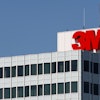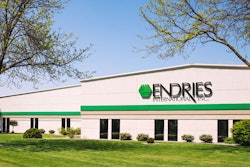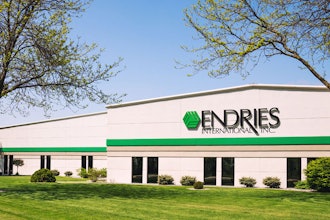RFID (radio frequency identification) technology has come a long way. Looking back 10 years, many companies who set out to deploy an RFID system often found that the technology itself “just wasn’t there,” and let their plans fall by the wayside. Today, as technology leaders gain a greater understanding of RFID and its capabilities, these same companies are giving RFID another try. As a result, the RFID market is at an all-time high and is prevalent in a wide range of industries. In fact, RFID technology is projected to reach $9.2 billion this year and a whopping $32.24 billion by 2024, according to research by IDTechEx.
For the distribution, manufacturing, and supply chain industries in particular, RFID is ideal for automating asset tracking and inventory control, thus eliminating costly user-initiated, line-of-sight inventory activities required by other methods like barcoding or the dreaded manual data entry. As a result, when deployed correctly, RFID can improve inventory accuracy, boost productivity, and cut costs. Typically, an RFID system comprises RFID readers, tags, and a blend of software, mobile devices, and wireless infrastructure — depending on the organization’s needs.
There are two types of RFID tags – passive and active – and both offer their own set of advantages and lend themselves to track a particular class of assets. Passive tags rely on readers to pick up their signal in order to supply the power necessary to respond to and broadcast their data. These tags are used for tracking a high volume of lower-cost items. Conversely, active RFID tags use their own internal power supply to transmit signals to standard wireless access points, providing real-time locating system (RTLS) for tracking high-value and high-impact mobile assets. As RFID continues to evolve, more companies are realizing that an RFID system incorporating both passive and active tags provides the greatest benefits to their operations.
Using both passive and active RFID, however, requires two, separate interfaces within a software system to track assets. These two systems create disparate data silos and make it difficult to achieve a holistic view of the operation. Operators have to know exactly which assets are tracked via active tags and which are tracked via passive tags, and then look at data from each system, individually, within the interface. This process initiates further issues, such as inefficiencies in workflow and inaccuracies in inventory management — issues that RFID is supposed to solve, not start.
The Hybrid Approach
The most viable alternative to running disparate data interfaces or selecting one type of RFID over the other is to build a Hybrid RFID system. In the most basic sense, Hybrid RFID is an approach that combines the best features of both active and passive RFID to create one, unified visibility solution for asset tracking. Rather than siloing data from the active and passive systems, the Hybrid approach brings data together through an asset management software system, and then pushes it out into other third party systems (ERP, WMS, etc.) for easy viewing and analysis.
Within a Hybrid system, where to apply active and passive RFID depends on the type of assets tracked. As mentioned, active RFID is best suited for tracking large, high-value, or expensive items. Assets that are consistently moving without a predetermined flow across the site, like forklifts, plant trucks, pallet jacks, or even people, are ideal candidates for active tags. For example, a distributor could use active RFID to pinpoint the exact location of its forklifts in real time by generating X-Y coordinates through the software interface. There is no need for a fixed RFID reader and specific read zones to obtain instant, real-time location information.
On the other hand, passive RFID is applicable when there are hundreds or thousands of small parts, supplies, or components with a standardized material flow. These items exist within an area where chokepoint/gateway detection and a limited read range are sufficient. For instance, a company could use passive RFID tags on a bin of small engine parts. As the bin moves in and out of the gateway, the fixed RFID reader will collect the tag’s information to provide “last seen” (rather than real-time location) knowledge. If a facility is less than 50,000 square feet, it is probably too small to necessitate an active RFID/RTLS system, and so a passive system would suffice.
In the case of a Hybrid system, as data is collected by both the active system (via an Active RFID location engine) and passive system (via a passive RFID reader controller and location engine), it is sent to an asset management tracking and alerting software application. This is where the chief advantages of the Hybrid approach begin to appear. Within one interface, the software application marries the data from the passive and active tags and provides users with full visibility into all assets — offering complete traceability of all components (large, high-value assets and small, high-volume parts alike). From a single system, operators can look up any asset, regardless of the technology used to track it, and gain insight into its location and movement within the facility. Also, users can generate customized reports, create event-triggered alerts, maintain a detailed history of each asset, and integrate the application with other systems, like ERP, to obtain greater business intelligence.
Keys to a Successful Hybrid RFID Implementation
Implementing a Hybrid system always begins with clearly defining the use case. This is the most important step in the process. Take the time to identify why you want to implement Hybrid RFID, where you want it applied, and what you want to accomplish with it. Are there high-value assets that would warrant active RFID, and smaller parts or products best-suited for passive? Remember: when embarking on any RFID project, always match the technology to the use case to get the most out of the investment. If another technology (barcodes, for example) would be a better fit, go for the solution that will best meet your overall requirements. Force-fitting an RFID solution is a recipe for a disaster.
Of course, the right blend of people is also essential in the implementation. It is not only important to have the right internal team, but also the right vendor or systems integrator to ensure that the technology aligns with the project’s goals. Also, keep in mind that you can always start small and build from there.
When suitably implemented, Hybrid RFID offers one, complete view of all assets and optimal traceability. Operators no longer have to view data from disparate interfaces or have to question the integrity of the data. With the intuitive, high-level insight provided by a Hybrid RFID system, you’ll obtain the efficiency and accuracy needed to reduce costs, improve productivity, increase output, and boost customer satisfaction. Naturally, these benefits all positively affect the bottom line and position users for a competitive advantage in the increasingly global marketplace.
For those who unsuccessfully adopted RFID back when the technology was still relatively green, now is the time to take another look. Flexible deployment options (passive, active, or Hybrid), a wealth of resources and knowledgeable integrators, and the lower cost and higher quality of RFID tags and readers make today opportune for revisiting the technology. So why wait?
For more information, visit www.barcoding.com.























